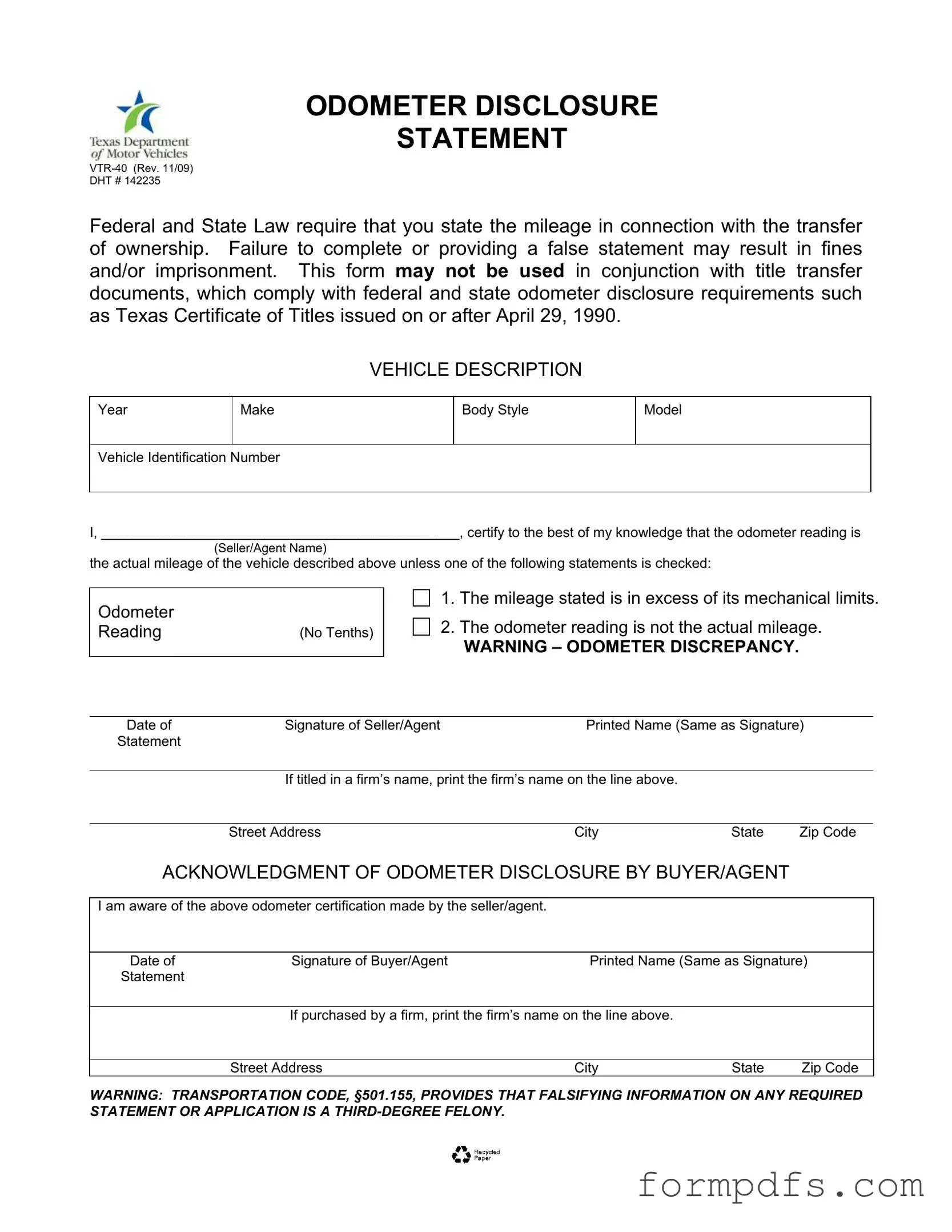What is the Texas Odometer Statement form?
The Texas Odometer Statement form, also known as VTR-40, is a document required during the transfer of vehicle ownership in Texas. This form captures the odometer reading at the time of sale and ensures compliance with federal and state laws regarding odometer disclosures.
Who is required to complete the Texas Odometer Statement?
Both the seller and the buyer (or their agents) must complete the Texas Odometer Statement. The seller certifies the accuracy of the odometer reading, while the buyer acknowledges receipt of this information. This process helps protect both parties from potential disputes regarding the vehicle's mileage.
What information must be included on the form?
The form requires specific details such as the vehicle's year, make, body style, model, and Vehicle Identification Number (VIN). Additionally, the seller must provide the odometer reading and certify that it reflects the actual mileage, unless otherwise noted.
What happens if the odometer reading is incorrect?
If the odometer reading is not accurate, the seller must check the appropriate statement on the form indicating that the mileage is not actual or that it exceeds mechanical limits. Providing false information can lead to legal consequences, including fines or imprisonment.
Is the Texas Odometer Statement form necessary for all vehicle sales?
This form is required for most vehicle sales in Texas, particularly when transferring ownership. However, it cannot be used in conjunction with title transfer documents that already comply with odometer disclosure requirements, such as Texas Certificates of Title issued on or after April 29, 1990.
What are the consequences of failing to complete the form?
Failure to complete the Texas Odometer Statement can result in significant penalties. Under Texas law, falsifying information on the form is classified as a third-degree felony, which may lead to legal repercussions for the seller.
How can I obtain a Texas Odometer Statement form?
The Texas Odometer Statement form can be obtained from the Texas Department of Motor Vehicles (TxDMV) website or through local county tax offices. It is essential to use the most current version of the form to ensure compliance with all applicable laws.
